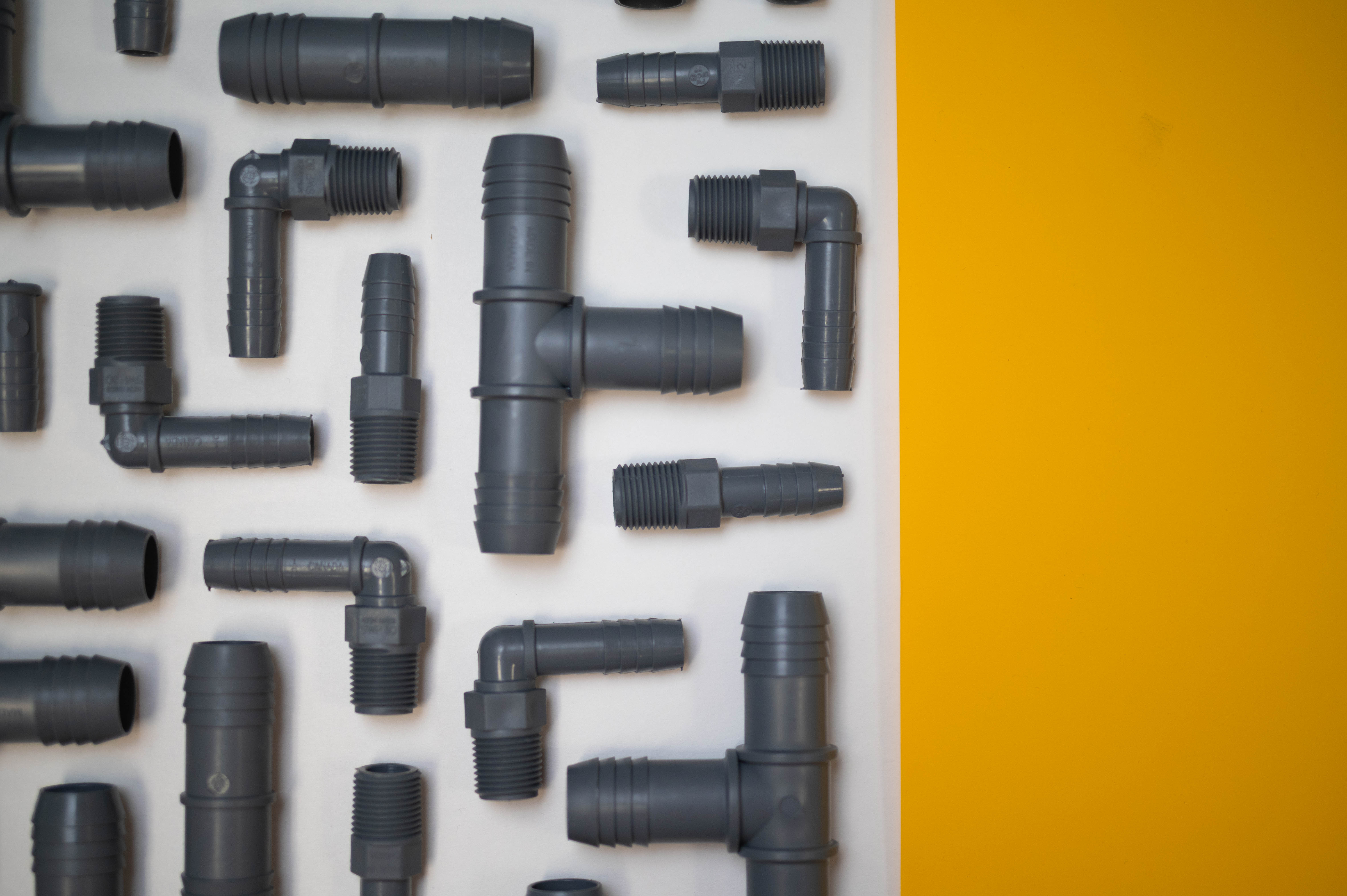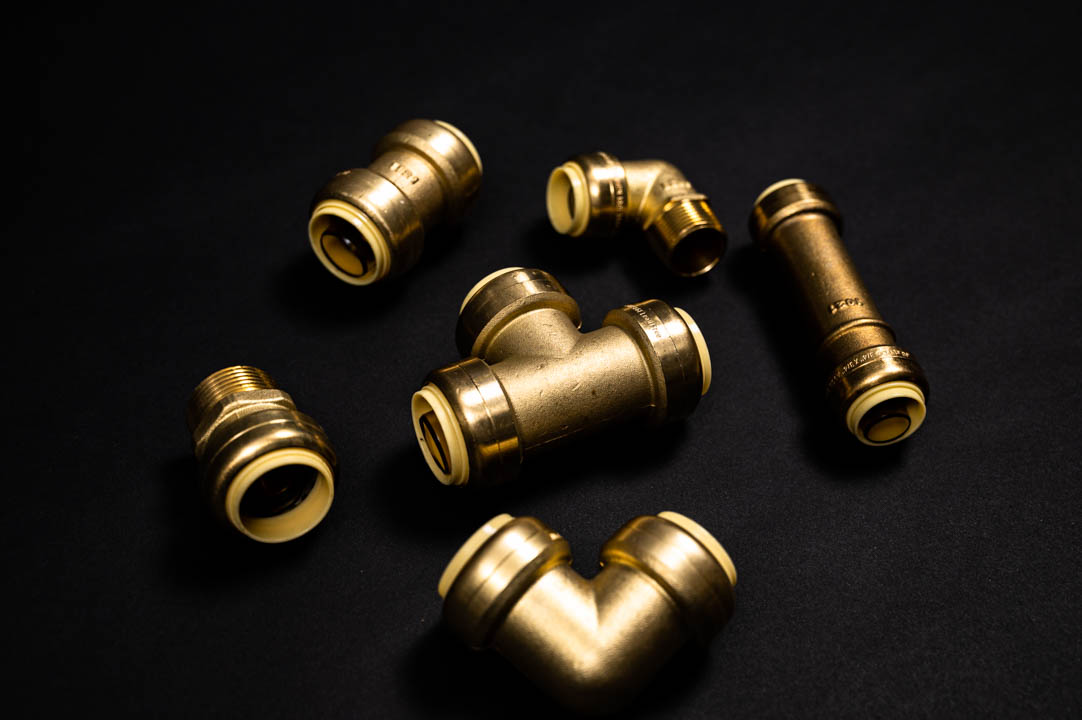Have you ever worked with barbed insert fittings and wonder how you could make the connection more secure? A good start is to use gear clamps, but, what else could you do to ensure you make the connection as strong as possible.
In this blog, we will take a look at some good practices and way to ensure that when you go to connect an insert fitting and poly pipe, you have everything you need to create a secure connection, the first time, eliminating any chances of leaks or pipes blowing off. Let's get started.
IMPORTANT: Following the below principles is extremely important when the connection is under stress such as the weight of the pump or pump column when involved in a submersible pump installation.
under stress such as the weight of the pump or pump column when involved in a submersible pump installation.
Step 1: Select a High Quality Insert Fitting
It is important to understand that not all insert adapters are made equal. Boshart insert fittings have tightly controlled barb profiles and outside diameters that ensure maximum gripping power. These may not be the same for all insert fittings that are found in the market today.
When selecting an insert fitting, you should keep an eye out for the following quality problems:
- Mold shift (uneven wall thickness on all sides)
- Cored hex nuts - these can create weak points
- Thick ends with a cored out inside - this gives the illusion of a heavy wall fitting
- Rough inside diameter - this indicates poor casting surface finishes
- Brass vs bronze alloy
When installing a submersible pump and using extra long insert fittings, a minimum of two gear clamps is recommended to be used. Three clamps can be used and is a small expense for some peace of mind.
Be sure to use Bronze or 304 stainless steel adapters and all 300 series "87" clamps. When you are inserting these fittings and gear clamps on the well or buried in water line applications, or any other corrosive environments, using brass or 200 or 400 grade stainless  steel is not suitable.
steel is not suitable.
Step 2: Next, you will need to slip the gear clamps onto the poly pipe, roughly a foot past the end of the pipe. This ensures the clamps are out of the way during heating.
Step 3: Once the gear clamps are in place, you can heat the poly pipe by either submersing the end of the pipe in a bucket of hot water or use a propane torch. Important to note that when you are using a flame, great care must be taken to not overheat, burning the pipe. Be sure to keep moving the heat source around until the outside of the pipe starts to get shiny around the diameter.
Step 4: Next, immediately insert the adapter into the poly pipe while it is still hot. Make sure you insert the pipe until it is against the stop in the insert fitting. Insert fitting barbs are larger than the PE pipe inside diameter and the pipe must be expanded as the barbs are inserted. You might have to use a rubber mallet to drive it in all the way, especially if you are using extra long insert fittings.
Step 5 FOR METAL INSERT FITTINGS: Once you have completed that step, you can quickly position the gear clamps over the barbs of the adapter before the pipe cools down. Be sure to alternate the worm gear screws at 180° to ensure even clamping force to maximum sealing pressure on the pipe. Now, torque the clamps to 60 inch pounds. Once the clamps are installed while the pipe is still hot, the pliable poly will be compressed and formed into the serrations, taking on the form of the barbs.
If this process takes too long, the pipe may need to be reheated. Worm gear clamps do not have the clamping capacity to form cold poly pipe into the serrations, therefore it is critical to heat the pipe to make it water tight and ensure a blow off proof connection.
Step 5 FOR NYLON, POLY & PVC INSERT FITTINGS: Similar to the above, quickly position the gear clamps in the center of the recessed section between the last insert serration. This is the best position for ensuring pull off or blow off resistance. Typically, one clamp in this position is enough for the pull off resistance and to guarantee a water tight seal.
the gear clamps in the center of the recessed section between the last insert serration. This is the best position for ensuring pull off or blow off resistance. Typically, one clamp in this position is enough for the pull off resistance and to guarantee a water tight seal.
Critical, Hard to Access Locations
For areas where the clamps cannot be easily accessed like a buried water line, it is highly recommended to add a second clamp over the barbs of the adapter before the pipe cools completely. You can alternate the worm gear screws at 180° to ensure even clamping force and maximum sealing pressure.
When the process is done properly using heat, the serrations and clamps will hold firmly. Testing that has been done has proven that the connections will hold securely, and the poly pipe will be the weaker component, eventually stretching and causing failure due to the increasing weight load.
In Conclusion:
By following the proper steps listed above, you will ensure that the connection will hold securely, providing you with peace of mind that no leaks or failure will occur. Simple steps will save you time and money.
Have further questions about this subject?

Head over to Boshart's Knowledge Base: technical product information, guidelines, and more.




.png)
SHARE